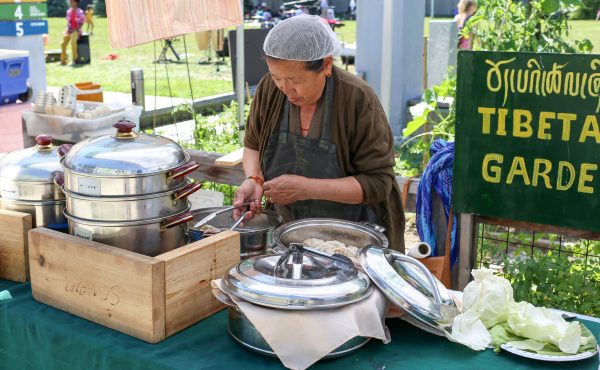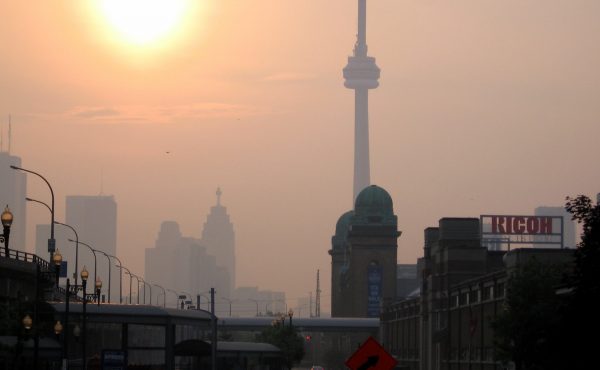 Cross-posted from Eye Daily.
Cross-posted from Eye Daily.
When it comes to tackling smog and climate change, getting cars off the street, planting more trees and making green building standards mandatory are the usual strategies that first come to mind. But more and more people concerned about the greenhouse gases that we produce are giving more thought to how far the food we eat was shipped or trucked or flown before it got to our plate. For many Torontonians (myself included), adjusting your lifestyle to eat locally produced food can be more challenging than making the commitment to bike to work everyday. (I’m embarrassed to say that I’m still having trouble avoiding take-out and planning my grocery shopping schedule around the days that the nearest farmer’s markets are open for business.)
Luckily, farmers markets seem to be popping up everywhere this year. Even city hall is taking action to buy locally. Toronto’s climate change action plan, which council adopted unanimously July 16, called for the development of an Enviro-Food Working Group to promote local food production, increase community gardens and find ways to expand local markets that sell locally produced food. (Here’s a stat for those still confused about what food has to do with climate change: carrots bought from local farmers can require 60 times less greenhouse gas emissions than carrots imported from California.)
One of the duties of the Enviro-Food Working Group includes reviewing upcoming food service contracts to ensure that 10 percent of the food served comes from local sources. Non-profit organizations such as Local Flavour Plus (LFP) have helped to make these sorts of goals easier to achieve for a while now by linking Ontario farmers with local purchasers. Last September the organization helped the University of Toronto become the first university in North America to commit to serving local food in select cafeterias and residence halls. And this spring, LFP partnered with the restaurant group Il Fornello, which now serves a local menu at eight of its restaurants.
The Toronto Enviromental Alliance (TEA) is also working to make it easier for Torontonians to buy locally. They just started a Greenbelt “Food From Home†campaign, which will help to connect Toronto’s diverse communities with Greenbelt farmers who grow food not traditionally produced in Canada.
The smog and climate change action plan’s recommendation to increase the number of community gardens in Toronto is consistent with the city’s Community Garden Action Plan, which was approved in 1999. According to a status report issued last year, there are 124 community gardens in the city with approximately 4,600 participants. The overall goal of the 1999 action plan was to see at least one community garden in every ward. As of last year, nine of the city’s 44 wards were still without a garden of their own. (To learn more, check out an article I wrote on the city’s community gardening goals last year.)
Sadly, the bad news for Toronto’s lofty environmental goals is, what else, lack of money. As TEA reported in their latest edition of council watch, “unless these revenue issues are resolved, there will be no money available to pay for [implementing the city’s plan].â€



